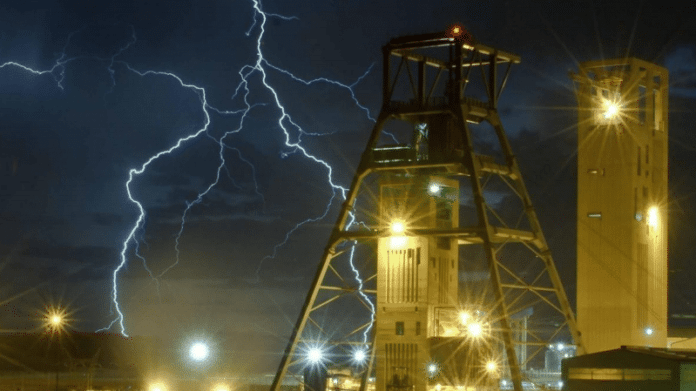
GOLD Fields reported a hefty decline in headline earnings for the year as costs ramped up, some of them related to its struggling South Deep mine in South Africa, whilst investment in new ounces leaned on the group’s net debt which increased $300m to $1.6bn.
However, Gold Fields CEO, Nick Holland, said the firm’s 2019 financial year reflected “an inflection” point for the company when high capital spend would convert into a stable gold production future for 10 years.
“2019 will be an inflection point: project capital halves, the business will turn cash flow positive in the second half [of the financial year] as Gruyere comes into production and our Damang project kicks in,” he said at a presentation of the full-year results.
The company posted headline earnings of $61m, equal to $0.07c/share for the year which compares to headline earnings for the 2017 year of $210m or $0.26c/share. There was a net loss for the year of $348m, equal to $0.42c/share (2017: $19m or $0.02c/share). The normalised profit for the year came in at $27m or $0.03c/share ($154m or $0.19/share).
The decline was largely put down to another bad year for South Deep which, by the time a restructuring exercise was complete, would have about 1,500 employees compared to 4,000 at the beginning of the previous financial year. The extent of the restructuring was a defining feature of their optimism for the operation this year.
Yatish Chowtree, an analyst for Macquarie Research, said that assuming a spot gold price and assumptions for all-in sustaining costs (AISC) of R610,000/kg for the year, South Deep would record a R70m cash burn – a forecast that Holland said would be a welcome advance for the mine. “That’s about $5m. Given the losses we suffered, that would be good.”
Asked in a media roundtable as to when Gold Fields would finally pull the plug on the operation, Holland said that the restructuring had to be given time. “We need to look at the trend by the end of the year. If the trend is better then we’ll see.
“Remember, South Deep is coming off a six week strike and it’ll take time to get the mine operating as it should,” he said. He earlier told analysts at a presentation that the Gold Fields board had raised the question of the sustainability of South Deep. “There isn’t a big difference of opinion on South Deep between us,” he said.
In any event, Gold Fields has taken out hedging against South Deep production which has been set at a modest 193,000 ounces compared to last year’s original target of about 300,000 oz. South Deep had sapped about $130m in negative cash flow during 2018.
PRODUCTION STABILITY
Perhaps as a statement of confidence, the company kept to its payout promises. It will pay a final dividend of 20 South African cents/share taking the total dividend for the 2018 year to 40 South African cents/share – a level which JP Morgan Cazenove described as “skinny”.
Holland said the group was intent on reinvesting in new gold ounces. “Having spent total project capital of $502m over the past two years, primarily on Damang (in Ghana) and Gruyere (in Western Australia), Gold Fields is on track to ensure that our international operations will be producing over two million ounces a year for the next decade,” he said.
Production of between 2.13 million and 2.18 million oz has been guided for the current financial year which compares to the 2018 number of 2.04 million oz which had exceeded guidance of two million oz, South Deep’s problems notwithstanding.
All-in sustaining costs would range between $980 to $995/oz for the year which compares to $981/oz in the 2018 financial year.
“The big reason is the continued disappointment at South Deep where the company forecast 2019 guidance to be 193,000 oz,” said the bank. It was also critical of the high capital expenditure profile going forward.








